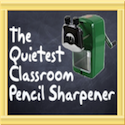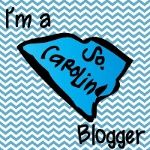Let's talk interactive notebooks. They've been all the rage the past few years, right? I'll admit that I jumped on the bandwagon several years ago myself, but I quickly found myself falling off the wagon. It may have actually been more of a jump. You see, I teach 2nd grade. Second graders still take FOR.EVER. to cut out anything. And they need lots of help folding. Should we even mention the gluing?
I couldn't jump off the bandwagon fast enough. I found that my instructional time was being cut in half (at least) due to the cutting...and folding...and gluing. Now, I know that some teachers will precut all of the pieces for their students ahead of time. Those teachers are saints. This teacher just doesn't have the time to commit to that.
Fast forward to the next year. My school decided to require all teachers to use interactive notebooks. Say what?!? How can a school require ALL teachers to use a specific tool to deliver instruction? Well friends, that's a rant I'm not even going to start today. But, it was non-negotiable, so I knew I had to find a solution.
Let me introduce you to my No-Cut Interactive Notebooks and explain why I have found them perfect for my primary classroom.
When I first created these, I wanted to keep the things I loved about Interactive Notebooks:
* They provide a record of learning.
* They provide interactive activities to showcase that learning.
* They serve as a meaningful informal assessment.
But I also wanted to add my own spin with these goals:
* NO CUTTING or FOLDING for students
* Minimal gluing
* Interactive activities and games for all concepts
* Opportunities for differentiation
* Written reflective responses
So, what does this look like?
The Notebook
I choose to use composition notebooks. I like these better than spirals because of several factors.
1) Students don't accidentally (or purposefully) rip the pages out.
2) There is no spiral ring to unravel or get caught on things.
3) They are more sturdy and easier to store.
4) Half pages (and all of my INB pages are half-pages) fit perfectly into these.
The Prep
I give my students a cover to design for each of my notebooks. This is just a way for them to make them a bit more personal to them and for me to easily identify them. After designing their covers, I use packing tape to secure them to the notebooks.
I also add a ribbon to the backs of the notebooks that students can flip and use as a bookmark. I hot glue and staple the ribbon to the inside of the back cover.
Finally, I staple a Ziploc bag to the inside of the back cover. This will hold two pennies and a paperclip, which students will use for most of the activities. It's super important to teach students HOW to close a Ziploc bag and give them time to practice, practice, practice on day one.
The Pages
My No-Cut pages are just that - absolutely NO cutting or folding for students! I just print out the INB pages and slice them in half. Each student gets half a page to glue into his/her notebook. That's it! Super easy. Super quick. Let's move on to the learning!
(Now, I know that some teachers stress the importance of the cutting and folding and those ARE important motor skills that young students need to develop. However, during my very limited instructional time is not the time to do this. We do LOTS of cutting and folding in my classroom...just not DAILY during instructional slots For those students who struggle with this, their frustration sets in before the instruction even begins.)
Anchor Charts
Many times, I will provide students with a personal anchor chart for that unit that provides important terms or concepts that they can refer back to during the unit.
Reassessments
One thing that I really tried to build in were opportunities for reassessment. We all know that not all students master concepts that first time they are introduced. Many times they will need to work with me again in a small group. Many pages have been designed so that students could do that page over and over again for practice without repeating the exact same problems. For example, in the ABC order page above, students could do this page several times and not select the exact same words to group together for alphabetizing.
Here's another example.
In this addition example, students could do this page over and over again and add different numbers each time thanks to the spinner. Why is this important? Because now, if I need to pull a small group of students to work on a concept and want them to do a little formal assessment to show me they've grasped the concept, I don't have to go searching for an additional page. The same page can be used again. The teacher already has the page handy and the student is already familiar with the format. Win-win!
Partner Games
I also use a LOT of partner games in my notebooks. Most of these games use spinners or pennies and are just plain fun! Let's face it, kids learn best when they're having fun and not even realizing that they're working. Many of the games ask students to work with a partner. I think it's extremely important for kids to have an accountability partner and someone to talk with about new concepts.
Many of the board games in the notebooks can be played over and over and over again. This means that the notebooks also become an instant tool for early-finishers. Students love to pull out their notebooks and play games throughout the day! Again, students are engaged on current skills and the teacher isn't having to prepare anything extra for this engagement. Another win-win!
Differentiation

Many of the pages can also be easily differentiated without much tweaking. Take this subtraction page for instance. If I have some students who are not ready to move to three digit subtraction, I could easily tell them to only spin the spinner twice to continue making two-digit numbers. Since the problems aren't written for the students, it provides an opportunity for differentiation and also extra practice
Reflection
Having students talk about their learning is so important! That's why almost every page in my notebooks have a little pencil pal at the bottom that asks students to explain something or extend their learning in some way. I like to think of these as my "exit slips" except that they're built right in to my interactive notebooks - no need to copy anything else!
These responses let me know if students truly understand the concepts or if they still have some misconceptions that need to be addressed.
If you're looking for a way to simplify the management of Interactive Notebooks while keeping the interactive activities and engaging learning, this just might be the solution for you!
Right now, I have the following No-Cut Interactive Notebooks available:
* 2nd Grade Math notebooks for all standards,
* science notebooks for weather, animals, and nutrition,
* grammar notebook
* Weekly Poem Work for grades 2/3
Click HERE to view my No-Cut INB section of my shop.




























































